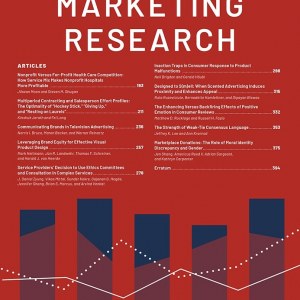
Yang, L., Toubia, O. and de Jong, M. (2015). A Bounded Rationality Model of Information Search and Choice in Preference Measurement Journal of Marketing Research, 52(2):166--183.
-
Affiliated author
-
Publication year2015
-
JournalJournal of Marketing Research
It is becoming increasingly easier for researchers and practitioners to collect eye-tracking data during online preference measurement tasks. The authors develop a dynamic discrete choice model of information search and choice under bounded rationality, which they calibrate using a combination of eye-tracking and choice data. Their model extends Gabaix et al.'s (2006) directed cognition model by capturing fatigue, proximity effects, and imperfect memory encoding and by estimating individual-level parameters and partworths within a likelihood-based hierarchical Bayesian framework. The authors show that modeling eye movements as the outcome of forward-looking utility maximization improves out-of-sample predictions, enables researchers and practitioners to use shorter questionnaires, and allows better discrimination between attributes.